
Hot Water Recirculation Pumps: Pros, Cons, and Costs
Last Updated: Apr 9, 2025For most people, the idea of taking a cold shower at 5 am on an early December morning is comparable to torture. For this reason, 98.7 percent of homes in the United States have indoor plumbing that includes, among other things, a steady supply of hot water. However, when we take our early morning showers, most of us let the water run until the hot water emerges from the faucet. If your water heater is in your basement and the master bathroom is on the second floor, you might have to wait up to 90 seconds before the hot water begins to flow. Hot water recirculation pumps are one way to cut back on the amount of water that most homeowners waste when waiting for hot water to emerge from our faucets and showerheads. This article takes an in-depth look at the pros and cons of hot water recirculation pumps.
Table of Contents
- What is a Hot Water Recirculation Pump?
- How Much Water Could You Save With A Water Recirculation Pump?
- Who Makes Water Recirculation Pumps?
- What Are The Energy Costs of Water Recirculation Pumps?
- What Is a Point of Use Tankless Water Heater?
- Should Water Pipes Be Insulated?
What is a Hot Water Recirculation Pump?
Hot water recirculation pumps are a nice convenience that allows you to benefit from an immediate supply of hot water to all of the faucets in your home. Instead of having to wait for the water to heat up every time you take a shower, wash your hands, or do the dishes, these unique systems will pump hot water through the hot water piping system and back to your heater. Sometimes these systems work with the cold water line. At other times, they have their own dedicated plumbing line.
In most cases, the hot water recirculation pump has a motion sensor located near each water fixture in your home. This sensor activates the circulation pump each time you turn the water on. The system includes temperature sensors and a check valve that prevents water from going back into the return plumbing line. The recirculation pump actually moves water in the line back to the water heater, thus reducing the amount of time needed for hot water to reach your faucet.

How Much Water Could You Save With A Water Recirculation Pump?
If you have to wait 90 seconds for hot water to appear every time you take a shower, the amount of cold water going down your drain adds up quickly. The average showerhead uses 2.1 gallons per minute (GPM) / 7.9 liters per minute (lpm), meaning that you could be wasting three gallons of water before you ever step foot into the shower. While low-flow showerheads can reduce wasted water, there is still a waiting time that leads to inevitable water loss. The water that goes down the drain will add up with each time you wash your hands, the dishes, brush your teeth, or turn on any faucet in your home.

Who Makes Water Recirculation Pumps?
Watts Premier is one company that specializes in selling hot water recirculation pumps. According to their calculations, the average household in the United States wastes 11,461 gallons of water each year while waiting for hot water to appear.
They arrived at this conclusion by calculating the average length of piping in a home (just over 125 feet), which holds about 3.14 gallons of water. If a household draws water ten times per day, over 31 gallons of water each day could be wasted while waiting for the hot water to appear. With the average national cost of water rising rapidly, a hot water recirculation pump could easily save you upwards of $50 each year. Since these pumps cost between $200 and $250 each, you could pay back the investment within a couple of years.

What Are The Energy Costs of Water Recirculation Pumps?
The potential water saving in the estimation above fails to take into account other important factors. Firstly, the expected 31 gallons of daily water savings only holds if households were only turning on their faucets and showerheads once the water in the pipes had completely cooled down. However, in the case of showers, most people will bathe either in the morning or in the evening. If you have installed hot water pipe insulation, hot water will appear almost instantly if you take a shower shortly after someone else in the household. This fact will drastically reduce the volume of wasted water.
Secondly, hot water recirculation pumps use a decent amount of energy - this also needs to be factored into potential savings. A pump that consumes 25 watts of power would use around 200 kWh of electricity each year. The average price of electricity in the US and Canada is $0.13 per kWh and $0.17 per kWh, respectively. So, you are looking at between about $26 and $34 each year, just to run your pump. Even if you were to trust the exaggerated expected water savings of 11,000 gallons each year, the cost of electricity to run the pump would still be more expensive than the average water savings for the vast majority of the country. Even without factoring in the $200 to $250 price tag of the pump itself (not to mention plumbing installation fees), there is no payback period.
Some models of hot water recirculation pumps come with timers that allow you to run the pump only during specific periods of the day when hot water is in the highest demand. For example, say you only run the pump for two hours in the morning and three hours in the evening. Then, you could potentially cut the annual electricity use down to 40-50 kWh, or less than ten dollars per year in electricity costs.
So, we have found that hot water recirculation pumps probably don't make economic sense for most homeowners based on these calculations. In many cases, the electricity cost of running the pump will cost you more than any expected savings from a reduced water bill.
If you live in a state (such as California) where water prices are continually increasing, a hot water recirculation pump that comes with a programmable timer might end up saving you money. However, there are other water and electricity savings technologies that are more efficient and a better deal.
Water Heaters
Shop water heater products that have been vetted for your health, wealth, and the planet.
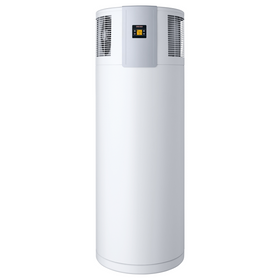
Stiebel Eltron Accelera 300 E Heat Pump Water Heater
Stiebel Eltron
Out of Stock
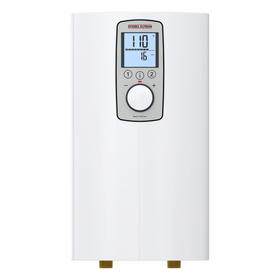
Stiebel Eltron DHC-E 8/10-2 Plus Point-of-Use Electric Tankless Water Heater - 202145
Stiebel Eltron
In Stock
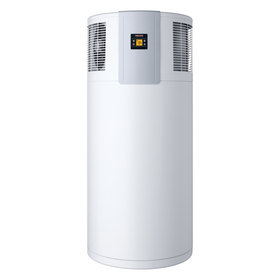
Stiebel Eltron Accelera 220 E Heat Pump Water Heater
Stiebel Eltron
In Stock
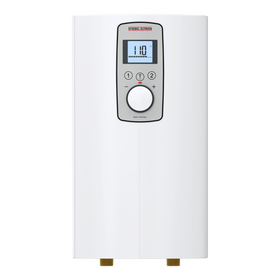
Stiebel Eltron DHC-E 3/3.5-1 Trend Point-of-Use Electric Tankless Water Heater - 200057
Stiebel Eltron
In Stock
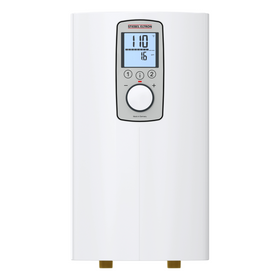
Stiebel Eltron DHC-E 12/15-2 Plus Point-of-Use Electric Tankless Water Heater - 200056
Stiebel Eltron
In Stock
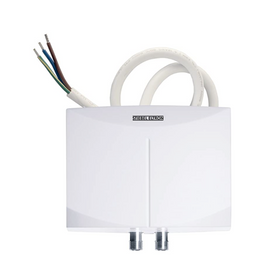
Stiebel Eltron Mini 2-1 Single Handwashing Sink Electric Tankless Water Heater
Stiebel Eltron
In Stock
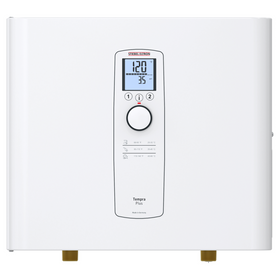
Stiebel Eltron Tempra 24 Whole House 24 kW 5 GPM Electric Tankless Water Heater
Stiebel Eltron
In Stock
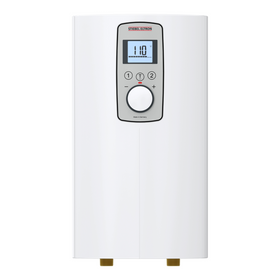
Stiebel Eltron DHC-E 8/10 - 2 Trend Point-of-Use Electric Tankless Water Heater - 200058
Stiebel Eltron
In Stock
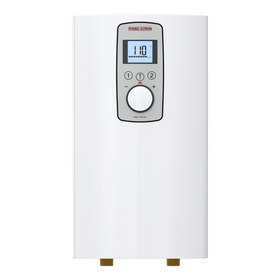
Stiebel Eltron DHC-E 4/6.2 - 2 Trend Point-of-Use Electric Tankless Water Heater - 200061
Stiebel Eltron
In Stock
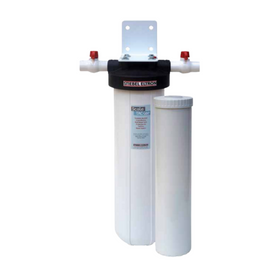
Stiebel Eltron Scale TAC-ler Cartridge
Stiebel Eltron
In Stock
Should Water Pipes Be Insulated?
Insulating your water pipes is also a great way to reduce water waste, especially if your household tends only to require hot water during certain periods of the day. In most cases, well-insulated water pipes will mean that you only have to wait for hot water twice daily, during the morning and evening.
Innovative Products
Products like Shower Start TSV by Evolve Technologies are innovative ways to decrease water loss through "behavioral waste." Since most people either brush their teeth or do other bathroom tasks while waiting for the shower to heat up, not only is cold water lost down the drain but even hot water can be lost as most of us don't merely sit in front of their shower waiting for it to heat up. The Shower Start TSV has a temperature-sensitive switch that will lower the water flow to a trickle once the water reaches 95 degrees. This setup can save countless gallons of unintentionally wasted hot water at the start of every shower.
Tobias Roberts
Tobias runs an agroecology farm and a natural building collective in the mountains of El Salvador. He specializes in earthen construction methods and uses permaculture design methods to integrate structures into the sustainability of the landscape.


